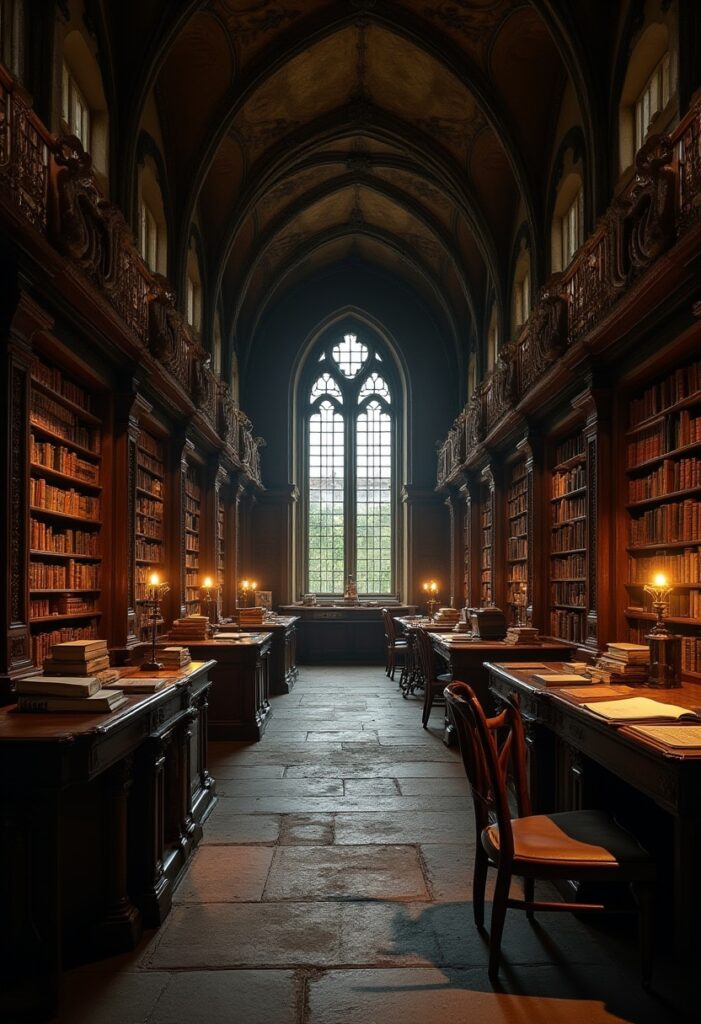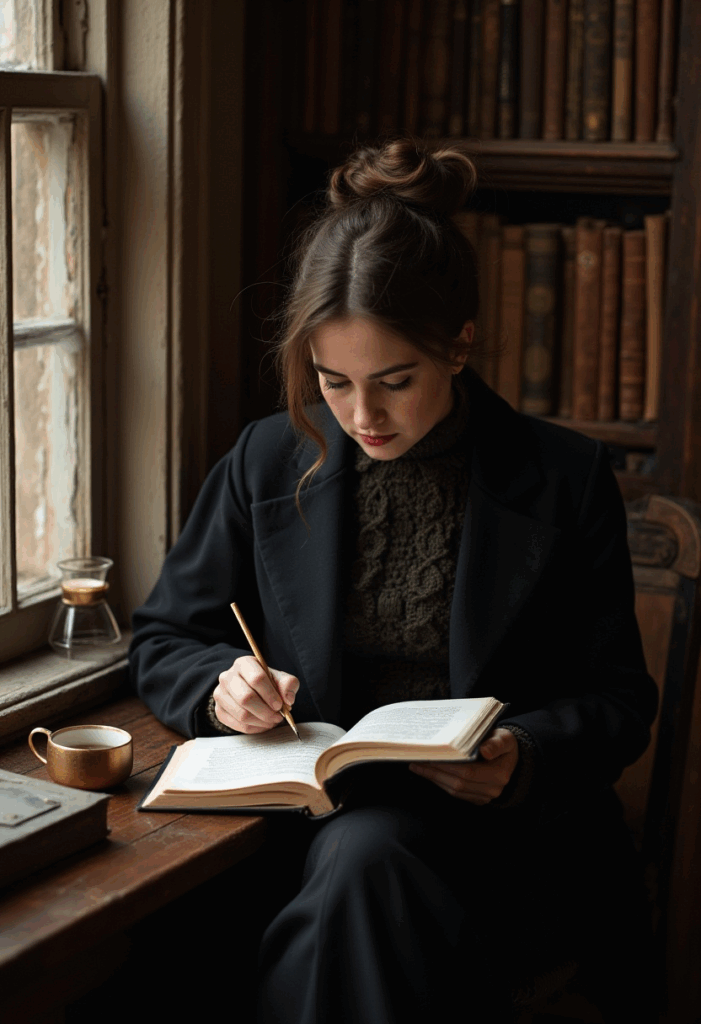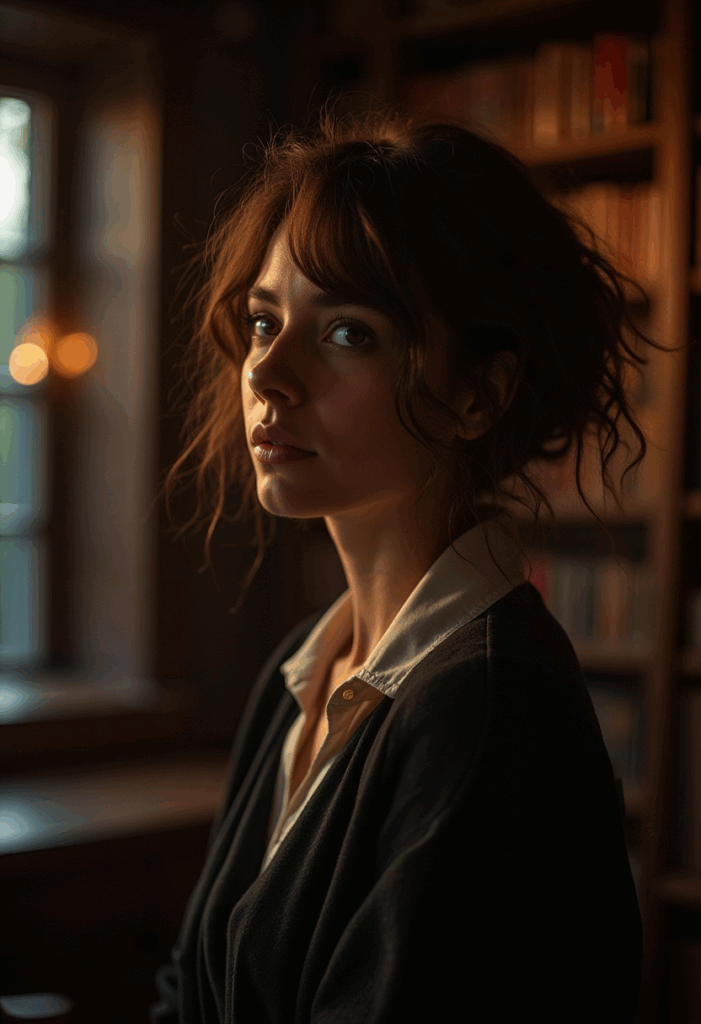Dark Academia originated as a digital aesthetic, yet it feels as timeless as the internet itself. It borrows the romance of ivy-clad universities, candlelit libraries, autumn rain, and the melancholy of study. It is a subculture built on aesthetics: tweed jackets, Latin texts, fountain pens, coffee in worn mugs, and afternoons lost in libraries where shadows linger between the shelves.
But more than a fashion trend, Dark Academia is a cultural mood. It is a longing for depth in an age of speed, for reflection in a time of noise. It draws on gothic traditions—stone architecture, rituals of study, melancholy beauty—and transforms them into an online identity.

The Architecture of Learning
The aesthetic roots of Dark Academia are rooted in architecture. It thrives on images of universities like Oxford, Cambridge, Yale, and Harvard—buildings where ivy drapes stone, and libraries smell of wood and ink. These spaces embody permanence, history, and aesthetics.
In digital spaces, images of old libraries, candlelit reading rooms, and stone corridors circulate as shorthand for this mood. They are not only about education, but also about ambiance. Studying in such spaces feels like participating in something larger, something timeless. That timelessness is precisely what makes Dark Academia feel gothic: learning as a ritual, knowledge as an aesthetic.

Fashion and Ritual
Dark Academia is as much about daily rituals as it is about aesthetics. Clothing reflects the mood: pea coats, plaid skirts, turtlenecks, blazers, sturdy satchels. The palette leans toward browns, blacks, creams, and autumn tones, echoing the season most associated with gothic coziness.
But it’s not just clothing. Rituals of study—handwriting notes, reading by candlelight, brewing tea in porcelain cups—are central. These practices slow down time. They make the act of learning feel ceremonial. Much like the Victorians, Dark Academia emphasizes ritual as a way of creating an aesthetic.

The Melancholy of Study
At the heart of Dark Academia is a particular kind of melancholy: the recognition that learning is endless, that time is fleeting, that beauty is touched by impermanence. Quotes from classical texts, poems about autumn, and images of students walking through fog embody this sense.
This melancholy is not depressing; it is enriching. It gives weight to study, depth to aesthetics. To linger in a library at dusk, surrounded by shadows and shelves, is to feel the gothic truth that knowledge is both infinite and fleeting. Dark Academia celebrates this paradox.

Online Communities
The aesthetic began on Tumblr and spread across Instagram, Pinterest, and TikTok. Online, people share not only images but playlists, reading lists, film recommendations, and personal reflections. It is a community of mood-makers, each contributing to the shared aesthetic.
TikTok, in particular, gave Dark Academia its iconic form: short videos of rain on stone windows, hands turning book pages, candles flickering beside essays. These snippets spread quickly because they resonated so strongly. They offered viewers a glimpse of a slower, more aesthetic life—a digital refuge from modern chaos.

Dark Academia as Gothic Identity
What makes Dark Academia distinctly gothic is its embrace of shadow, ritual, and aesthetic. It does not glorify brightness or speed; it glorifies reflection, imperfection, and memory. A coffee stain on notes, a rainy walk through campus, an extended evening reading by lamplight—these are not flaws but features.
In this sense, Dark Academia is not only a subculture but an inheritance. It continues the gothic tradition of finding beauty in melancholy, elegance in shadow, and aesthetic in ritual. It reminds us that to study is not only to learn but to dwell—to linger, to savour, to make the act itself an aesthetic.

